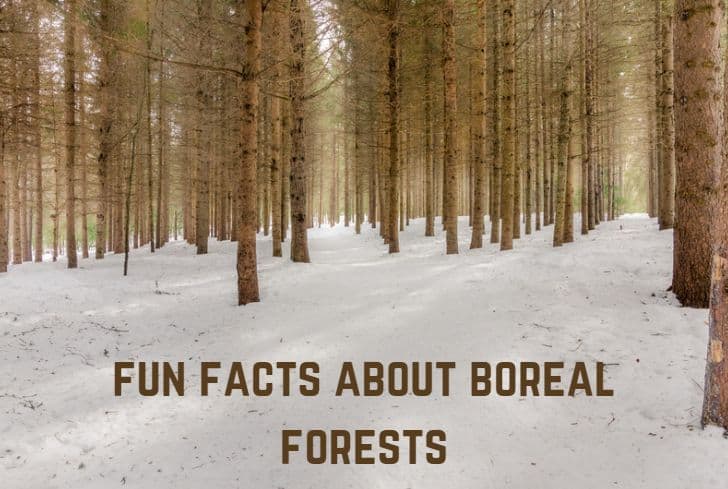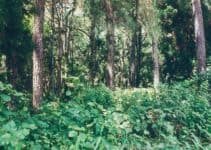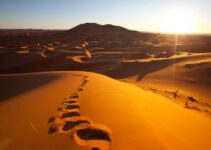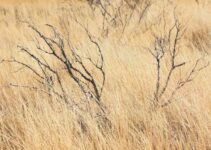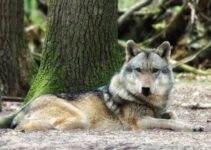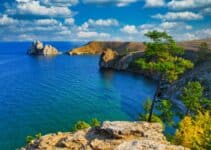If you love nature and watch the news about nature, you may have heard about boreal forests. However, if you have never heard about boreal forests, you might wonder what it is all about.
The boreal forest, often known as the snow forest, is an ecosystem, or more precisely, a collection of several habitats distinguished by coniferous woods. Despite the significant regional variation, it is found in high northern climates, in the transition zone between the tundra and the tropical forest.
Let us dive into the world of boreal forests and explore all about them, such as how big they are. We would also look at some of the exciting facts about boreal forests.
How Old is the Boreal Forest?
Compared to certain trees that grow in more temperate climes, most of the trees in boreal forests are young. Forests are typically less than 100 years old throughout the western boreal zone and younger than 200 years old, mainly in the eastern boreal zone.
Due to continual natural events that are a product of an ecological loop that rejuvenates the forest, scientists do not believe the boreal forest to be ancient.
To preserve the ecosystem function and long-term health of the forest, environmentally friendly forest management practices frequently aim to mimic the results of natural disturbances.
Amid temperate regions and tundra, the boreal forest covers vast North American and Asia areas. Although the winters in these areas are severe, water is rarely a problem.
The diversity of plants is much lower than in a temperate forest, and only a few coniferous species predominate in the tree community. The Taiga supports a lot of nesting birds in the spring, despite having a lower flora richness than a temperate forest.
The highest concentration of living biomass on the earth’s surface is found in the boreal forest. The equilibrium of carbon flows may change due to global climate change, even though it is now believed to be a positive sink for carbon.
These huge woods span the Northern Hemisphere and encompass Scandinavia, Russia, and Canada, accounting for 29% of the world’s total forest area. Boreal forests can be found in northeastern Minnesota and central Alaska in the United States.
Spruce, birch, fir, aspen pine, and larch are most prevalent in boreal forests. Their mosses and numerous varieties of wildflowers typically cover the woodland floors.
The most prevalent and biggest biome on land is the boreal forest. The evergreen trees found in abundance in boreal woods are conifers. Taiga, a Russian word that means “swampy, damp woodland,” is another name for boreal woods.
How Big is the Boreal Forest?
The largest intact forest ecosystem in the world is found in Canada’s boreal forest. From the Yukon to Newfoundland and Labrador, it covers 1.2 billion acres of northern Canada.
This forest represents a lot more than the Amazon rainforest. It contains double the carbon per acre of tropical rainforest and has more surface freshwater than any other place on earth.
There are southern and northern zones in boreal woods. Southern boreal woods are fertile enough to provide lumber and fiber for pulp production and have a greater density of trees that are 15 to 30 meters tall.
In the core of Asia and North America, far from the coasts, the southern boreal forests occasionally experience huge, intense crown fires that cover between 100,000 and 1 million acres.
Several animals live in the boreal forest. The two main predators in the boreal forest are wolves and lynxes. Many more animals call it their permanent home and the winter habitat of migrating caribou and reindeer.
Boreal forests are primarily located in Canada, Russia, Fennoscandia, and Alaska, predominantly between 45° and 70° latitude, and cover around 11 percent of the planet’s surface. About three million square kilometers of boreal forest in Canada are still unaffected by industrial development, making it the biggest unbroken forest on the planet.
Due to its high degree of intactness, the forest has drawn the attention of environmentalism and conservation specialists who see the forest’s unexplored areas as a chance for extensive conservation that would be impossible in other regions of the world.
Boreal Forest Climate
Strong seasonal fluctuation is a defining feature of the boreal forest’s climate, with short, fairly warm, humid summers and long, icy, dry winters. Extreme temperature variations can occur, particularly in the mid-continental regions.
In the boreal forest, it is necessary to reevaluate the conventional calendar seasons determined by the sun’s position in the sky, the transit of the equinoxes, and the solstices.
The majority of the planet’s organic carbon in soil stocks is maintained by boreal forests, which also have the highest biogeophysical impact on the global average temperature among all biomes due to their impact on high latitude reflectivity.
Despite the often unexpectedly low average annual precipitation, low temperatures and abundant cloud cover result in little evaporative strain. In the southern boreal forest, snow accumulation lasts a minimum of five months and seven to eight months up north.
In boreal forests, soil temperature and thickness are typically connected with forest production. Gradients and aspects influence soil temperature. Warmer soils have higher levels of biological activity and microbial breakdown, which releases more nutrients and promotes more rapid and long-lasting plant development.
As a result, cool steepness and basins that collect cold air are likely to support less biomass compared to warm slopes. Compared to most of the world’s woodlands, the Taiga has quite peculiar weather.
The Taiga forest’s summertime lasts only 50 to 100 days with no cold. In the summer, the day’s daylight might reach 20 hours. Due to the extremely harsh climate, especially during the winter when the native wildlife of the Taiga travels to other areas, it is difficult for people to survive in this boreal forest.
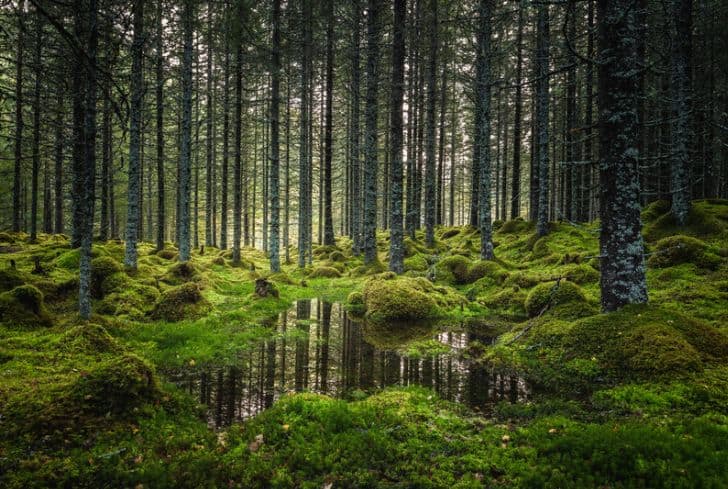
15+ Interesting Facts About Boreal Forests
There are several interesting facts about boreal forests that you should know. These facts will help you know how special and fascinating boreal forests are. Below are some interesting facts about boreal forests.
1. In the boreal forest, burns and wildfires are common occurrences. These flames create a growth pathway for other plants and tiny living microbes while removing old, diseased, or otherwise damaged trees.
2. Coniferous plants in this forest yield cone-shaped seeds. The foliage never falls off, stays green all year long, and will not wilt out in the cold thanks to the needle structure of the plant.
3. The woodland is believed to be renowned as the “snow forest,” and very little rain is forecast yearly. Thirty-three inches of rain are expected to fall overall each year.
4. The boreal forest can get as cold as -60 degrees Fahrenheit. The Taiga biome experiences only three months of summer per year, with seven months of bitterly harsh winters in between.
5. Only throughout the summer can one notice the growth of trees. They only grow for around three months, even during the summer.
6. The name ‘boreal’ originates from the Greek god of the north wind, known as ‘Boreas.’
7. Some of the world’s purest and largest freshwater lakes can be found in the Canadian boreal forest. The Great Slave Lake is the deepest in North America, while the Great Bear Lake is regarded as the largest unpolluted lake in the world.
8. Only the boreal forest contains soft timber wood, a crucial ingredient in paper production. This softwood may easily grow and endure in the cold boreal forest. The boreal forest alone has 3 trillion trees.
9. The soil dries out during these long winters, making the roots of such trees exceedingly shallow. Since weak roots can easily uproot a tree, summer is when they develop to their best potential into strong roots.
10. Scotch pine predominates in the boreal forests in southern central Siberia and northern Europe. It grows from northern Scotland to the Russian Pacific coast, making it the world’s most widely dispersed pine species.
11. The fauna of the boreal forest is distinct and distinctive. The colors of the creatures can change according to the season, and most have thick coats and blubber, which helps them survive on bitterly cold days when they have no chance to travel to warmer climates.
12. The boreal ecosystem was fully covered by glaciers decades ago. Holes and depressions were created in this woodland as the glaciers began to melt.
13. Human cutting and mining operations put trees in great peril. Since the boreal forest has a relatively short growing season, it will take a significant amount of time for a tree that has been chopped down to regenerate or grow back.
14. The boreal forest’s slow decomposition due to the low temperatures creates a layer of sponge-like undecayed plants on the ground. Only during the summer months does the decomposition process accelerate because melting streams and rivers bring the necessary nutrients.
15. The boreal forest stores more carbon dioxide than tropical and temperate forests worldwide, which is a strange fact.
16. The boreal forest will experience long summer days and long winter nights whenever the earth leans on its axis.
Conclusion
The boreal forest contributes significantly to the earth’s oxygen supply by collecting carbon dioxide produced by people and assisting in the preservation of the ozone layer thanks to its profusion of green vegetation.
However, human activities like deforestation are destroying the boreal forest’s structure. When a tree is harmed, it takes a long time to grow back because the biome has an extremely sluggish growth rate.
This article teaches you about boreal forests and their importance to the planet. Therefore, preserving these natural forests and taking responsibility for their protection is crucial.
